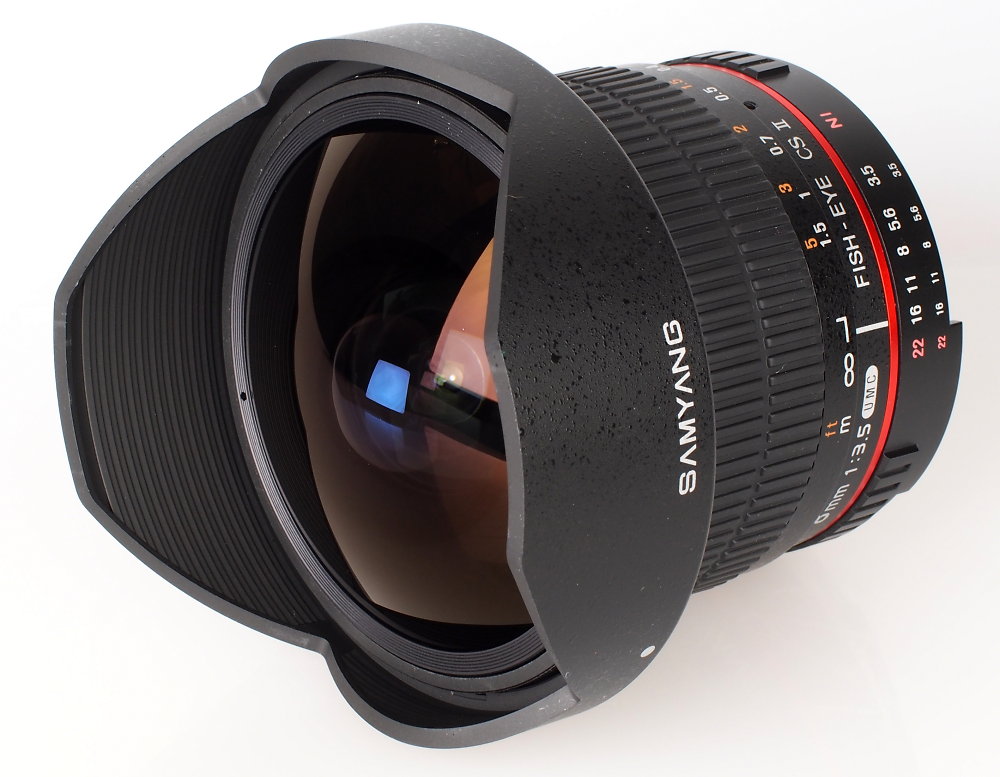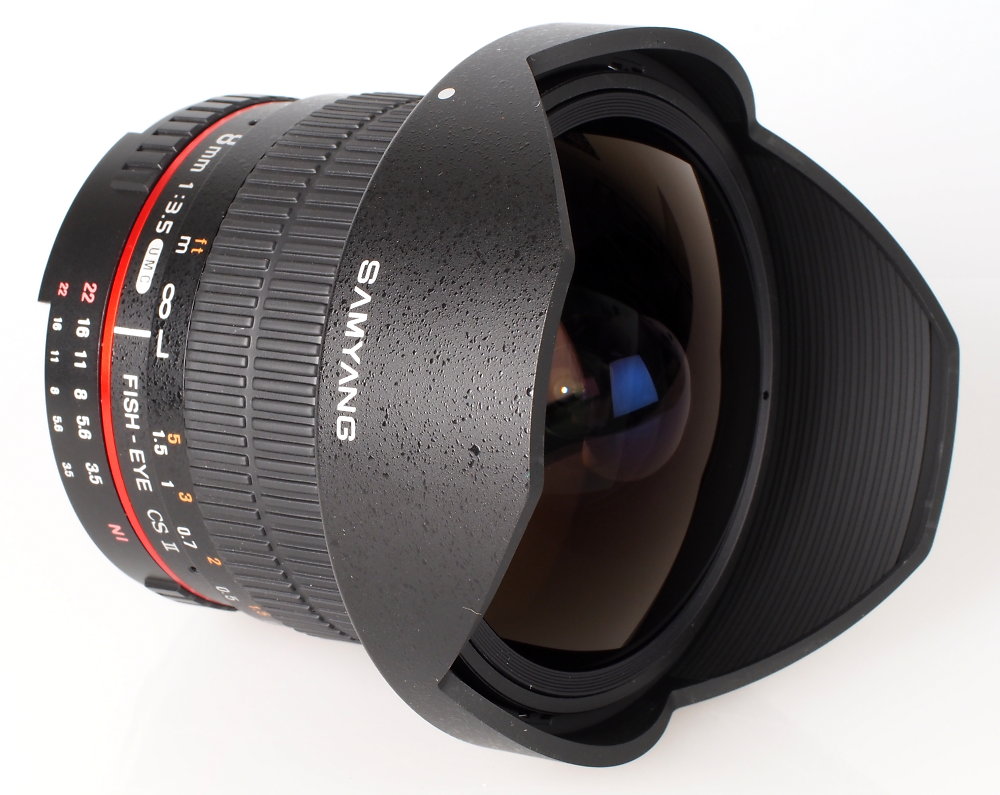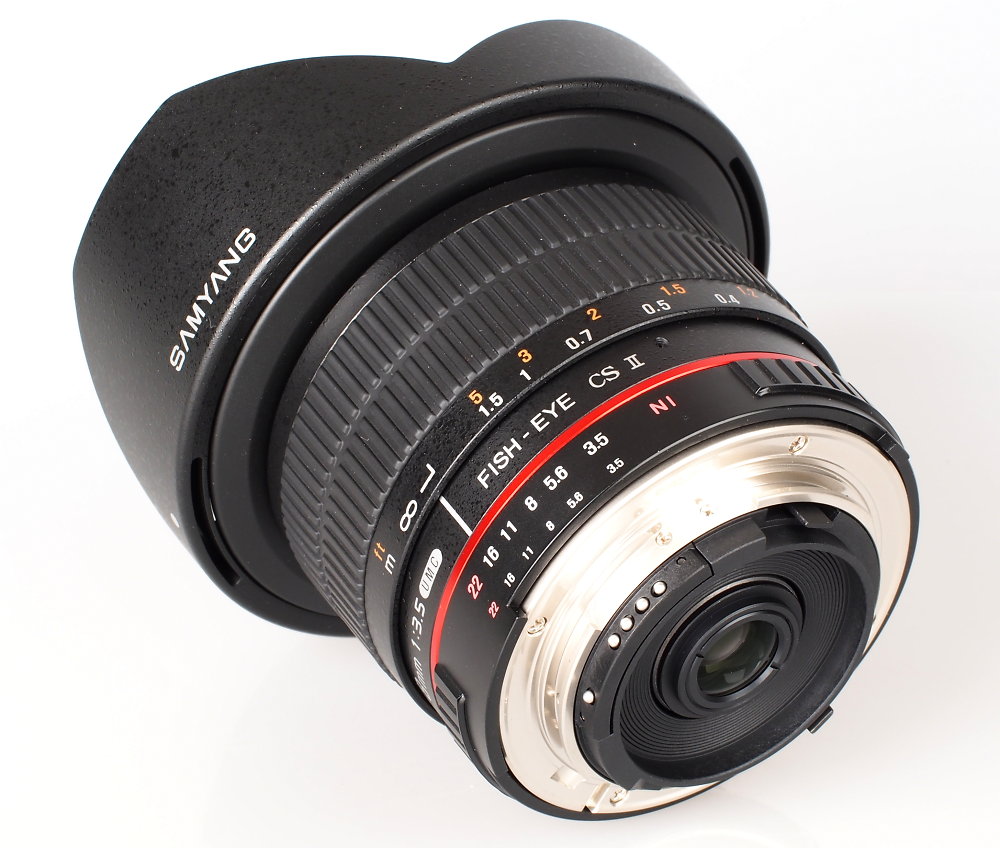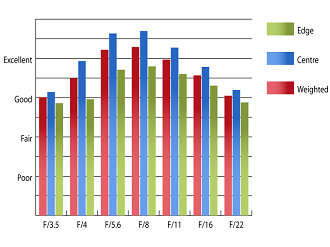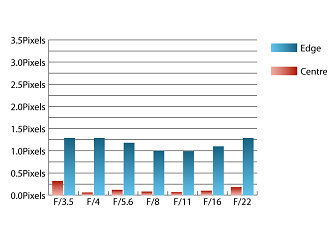Samyang 8mm f/3.5 UMC Fish-eye CS II Lens Review
Handling and Features
Performance
Verdict
Specification
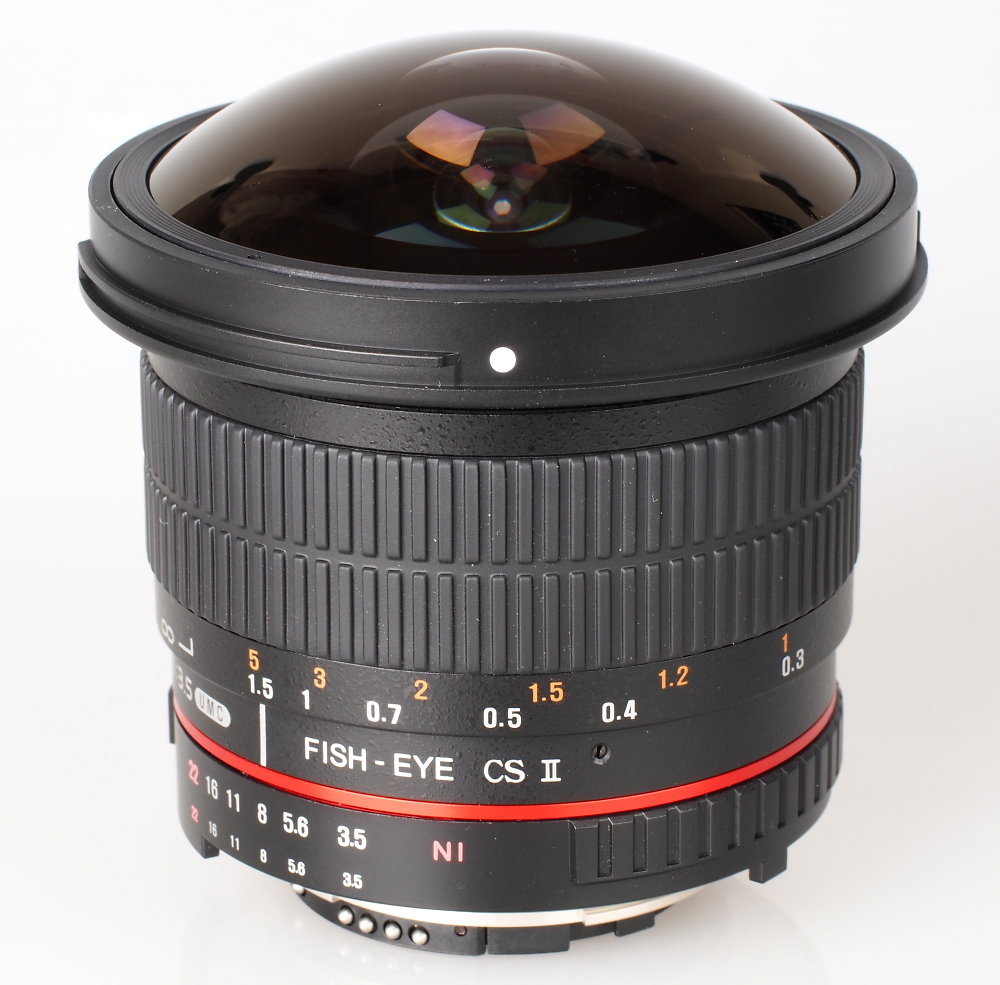
This 8mm fisheye lens provides a diagonal field of view of 180 degrees on a 1.5x crop APS-C DSLR, sports f/3.5 maximum aperture and the AE version we are reviewing here is available for around £250 for Nikon cameras with an APS-C size sensor. The AE version has a metering chip built in to transfer exposure information between the lens and the camera. A non-AE version of the same lens is available in Canon, Four Thirds, Nikon, Pentax and Sony flavours for around £210. In this review we’ll take a look at how it performs.
Samyang 8mm f/3.5 UMC Fish-eye CS II Handling and Features
The build quality of this 8mm fisheye lens from Samyang is very good indeed. High quality plastics have been used for much of the lens barrel and the lens mount is metal. It balances well on the Nikon D300 used for testing.
Focusing is manual, and the action of the focus ring is smooth and precise. Focus distances are marked on focusing ring, although there is no hyperfocal scale, which is a shame.
Taking images of anything over two to three metres away is simple, as the lens can simply be left set on or close to infinity. For closer distances it is recommended to use the electronic focus confirmation feature of your DSLR, or a dedicated focusing screen for manual focus lenses if taking still images using the viewfinder. If recording video, viewing a magnified section of the frame will ensure accurate focusing.
Samyang 8mm f/3.5 UMC Fish-eye CS II Performance
At maximum aperture, sharpness is good in the centre of the frame, and only slightly behind towards the edges of the frame. Stopping down improves sharpness in the centre of the frame dramatically, reaching outstanding levels by f/5.6. However, clarity towards the edges of the frame is never quite as good, reaching very good levels between f/5.6 and f/11.
How to read our charts
The blue column represents readings from the centre of the picture frame at the various apertures and the green is from the edges. Averaging them out gives the red weighted column.The scale on the left side is an indication of actual image resolution. The taller the column, the better the lens performance. Simple.
For this review, the lens was tested on a Nikon D300 using Imatest.
Levels of chromatic aberrations are acceptable, just exceeding 1.25 pixel widths between f/3.5 and f/4 and dropping as the lens is stopped down to between f/8 and f/11. Diffraction causes fringing to become more prevalent again at smaller apertures, exceeding 1.25 pixel widths at f/22.
How to read our charts
Chromatic aberration is the lens' inability to focus on the sensor or film all colours of visible light at the same point. Severe chromatic aberration gives a noticeable fringing or a halo effect around sharp edges within the picture. It can be cured in software.Apochromatic lenses have special lens elements (aspheric, extra-low dispersion etc) to minimize the problem, hence they usually cost more.
For this review, the lens was tested on a Nikon D300 using Imatest.
Straight lines placed towards the edges of the frame curve wildly, as is typical of fisheye lenses due to the extreme field of view. However, this lens produces images with stereographic projection, which means that images are more natural looking than typically found with fisheye lenses that produce images with equal-area projection. Objects placed near the edges of the frame appear less squashed than those taken with a lens that produces equal-area or orthographic projection.
Testing of illumination falloff towards the corners formally isn't possible, due to the extreme angle of view. In use, at f/3.5 and f/4 a noticeable, but gradual falloff in brightness can be seen appearing towards the corners, but this appears visually even by f/8
Flare and loss of contrast when shooting with bright light sources in the frame are both controlled well, with good contrast being retained when shooting into the light. A little flare and loss of contrast may be seen with a bright source of light in the frame when shooting at wide apertures, but this is reduced as the lens is stopped down. The hood on this MkII lens is removable, which means it can be used as a circular fisheye on a full frame camera, although the whole image circle is too large to fit within the 35mm frame, it still may be useful, for example, if you wanted to create a square image that has a 180 degree angle of view from corner to corner.
[EDB]5657/IMAGES/5[/EDB]
Value For Money
Being priced at around £250, for the AE version, this lens represents excellent value for money, especially given its optical performance and the novel ability to remove the hood for use on full frame cameras.
Canon only offer an 8-15mm fisheye zoom for covering the APS-C format with a 180 degree diagonal field of view. This lens isn't cheap either, retailing for around £1150.
Nikon's venerable 10.5mm DX fisheye has an enviable reputation for optical quality, plus it sports a faster f/2.8 maximum aperture and autofocus. However, these features come at a price, with this lens retailing for around £550.
Sigma also offer a fisheye lens for APS-C sensor DSLRs. Their 10mm f/2.8 fisheye has a fast f/2.8 maximum aperture and silent autofocus, but costs around £490.
Finally, Tokina's 10-17mm DX fisheye zoom is another alternative. As this lens offers zoom, it should afford greater compositional flexibility. This lens is available for around £520.
Samyang 8mm f/3.5 UMC Fish-eye CS II Verdict
Even if you discount the fact that this 8mm fisheye is a high quality lens, available for under half the price of equivalents from other manufacturers, this is a very interesting lens. It is capable of producing images with excellent sharpness, the build quality is good, and the removable hood adds extra flexibility, allowing the lens to be used as a partial circular fisheye on full frame cameras. Even the lack of autofocus shouldn’t put you off this lens, as the depth of field available with a fisheye, makes focusing manually incredibly easy.
Samyang 8mm f/3.5 UMC Fish-eye CS II Pros
 Outstanding sharpness in the centre when stopped down
Outstanding sharpness in the centre when stopped down
 Good build quality
Good build quality
 Removable hood
Removable hood
 Inexpensive
Inexpensive
 Stereographic projection
Stereographic projection
Samyang 8mm f/3.5 UMC Fish-eye CS II Cons
 Slightly better performance at maximum aperture would’ve made this a great lens, rather than a very good one
Slightly better performance at maximum aperture would’ve made this a great lens, rather than a very good one
| FEATURES |  |
|
| HANDLING |  |
|
| PERFORMANCE |  |
|
| VALUE FOR MONEY |  |
|
| VERDICT |  |

The Samyang 8mm f/3.5 UMC Fish-eye CS II is capable of producing images with excellent sharpness.
[EDB]5657/AMAZON/200-200[/EDB]
[EDB]5657/SPECS[/EDB]
Add your message
Please login here or if you've not registered, you can register here. Registering is safe, quick and free.
photodo Stats
428 MTF tests
74 in-depth photodo reviews
100+ users join each day
Help the lens community by reviewing or rating a lens today via our lens search
Latest Lens Reviews
- Chinon 28mm f/2.8 Vintage Lens Review
- Canon EF 70-200mm f/4L IS II USM Lens Review
- Samyang AF 85mm f/1.4 EF Review
- Sigma 70mm f/2.8 DG Macro Art Review
- Samyang AF 24mm f/2.8 FE Review
- Meike 50mm f/1.7 Review
- Tamron 70-210mm f/4 Di VC USD Review
- Lensbaby Burnside 35mm f/2.8 Review
- Asahi Super Takumar 50mm f/1.4 Review
- Asahi Super-Multi-Coated Takumar 135mm f/3.5 Review
